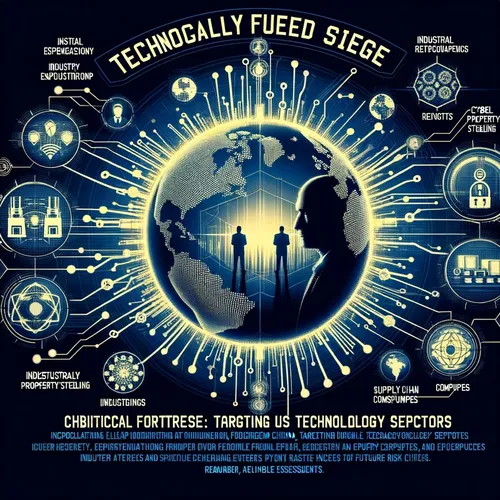Psst! Beijing's Hacking Spree: From Microsoft to Military Secrets!
- Author
- Quiet. Please
- Published
- Sun 03 Aug 2025
- Episode Link
- https://www.spreaker.com/episode/psst-beijing-s-hacking-spree-from-microsoft-to-military-secrets--67238785
This is your Silicon Siege: China's Tech Offensive podcast.
Listeners, this is Ting coming at you from Cyber Ops HQ, and wow, these past two weeks have felt like binge-watching “Mr. Robot”—except it’s Beijing, not Elliot, hacking into the mainframe. Let’s crack into what’s been happening on the frontline of Silicon Siege: China’s Tech Offensive.
Microsoft has been sweating harder than a GPU mining crypto after a power outage. On July 22, the company confirmed that several Chinese-linked hacking groups—including Linen Typhoon, Violet Typhoon, and Storm-2603—have exploited fresh vulnerabilities in SharePoint. Here’s the kicker: The attacks began the day before Microsoft could release a fix, hitting everything from the U.S. Education Department to the National Nuclear Security Administration. There’s even speculation that internal leaks from Microsoft’s Chinese security partners may have fueled these attacks—a plot twist worthy of a cyberpunk novel. ProPublica also dropped a bombshell: Microsoft was using engineers in China to maintain U.S. DoD systems. Three days after this went public, the practice ended with the grace of a force-quit command.
If you thought that was bad, an anonymous U.S. state's Army National Guard had its network compromised as far back as last March, courtesy of the group Salt Typhoon. According to Homeland Security memos obtained by NBC News, this wasn't a smash-and-grab; it was a meticulous, months-long reconnaissance op intended to leapfrog into other government systems. Speaking of legal intrigue, Chinese hackers infiltrated Wiley Rein, a D.C. law firm neck-deep in U.S.-China trade drama. Their play? Siphoning sensitive emails for insight into American negotiation strategies—international business espionage as a service.
Zooming in on the supply chain, DeepStrike reports that Chinese-backed hackers have made telecom their playground, infiltrating at least eight major U.S. providers. This means not just trade secrets at risk but the very backbone of U.S. digital infrastructure potentially primed for manipulation or disruption—think: shutting down your next Zoom call, or worse, critical comms for emergency services.
We can’t ignore the boots-on-the-ground espionage either. In July, U.S. authorities charged Yuance Chen and Liren Lai with espionage in California after attempts to wrangle blue-water naval tech and Navy personnel details for China’s Ministry of State Security. In another Southern California case, engineer Chenguang Gong pleaded guilty to filching military-tracking blueprints for Chinese interests.
Industry watchers like sinologist Alex Joske are raising red flags, warning that California is now "the most mature" Ministry of State Security network outside China, and the Bay Area’s cluster of tech talent makes it prime hunting ground for both overt and covert action.
Strategically, experts at Northrop Grumman famously warned years ago that Chinese cyber espionage “saved China years of R&D” and billions in funding—now, with quantum computing and AI in play, the stakes are higher than ever. Former Microsoft AI chief Harry Shum warns, “China is catching up fast in algorithms”—and each breach hands Beijing another blueprint to leapfrog Western innovation.
Future risk assessment? If you’re in tech, scrub your LinkedIn; Mike Burgess at the Australian Security Intelligence Organisation just warned that overexposure on social media is costing billions globally in IP theft. Stay patched, stay paranoid, and if you’re not using two-factor authentication, you’re basically handing out your passwords at a Shenzhen street fair.
Thanks for tuning in to Silicon Siege with Ting—subscribe for your shot of cyber caffeine. This has been a quiet please production, for more check out quiet please dot ai.
For more http://www.quietplease.ai
